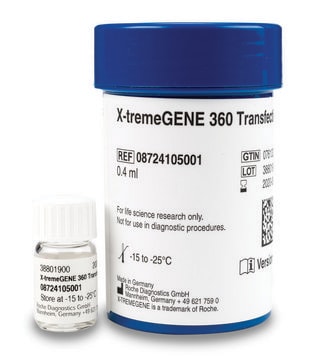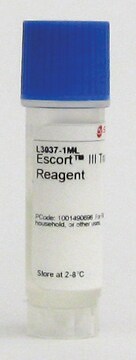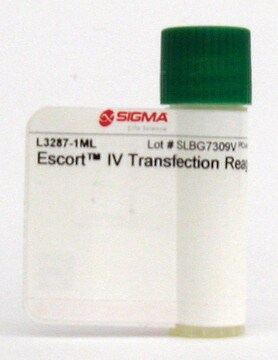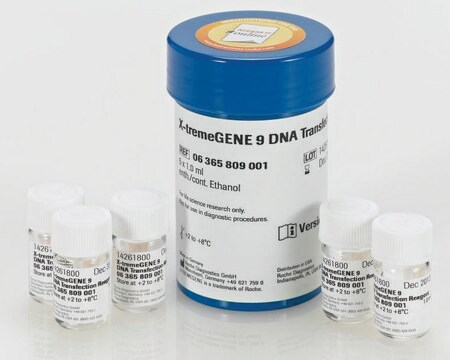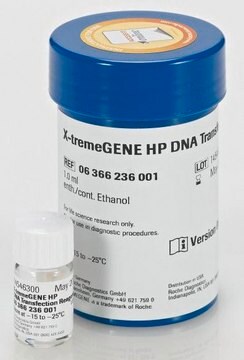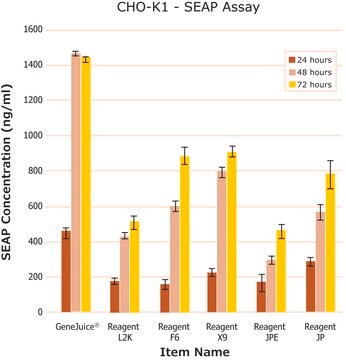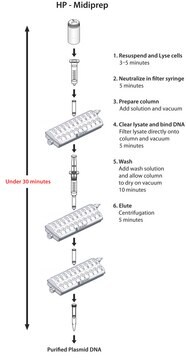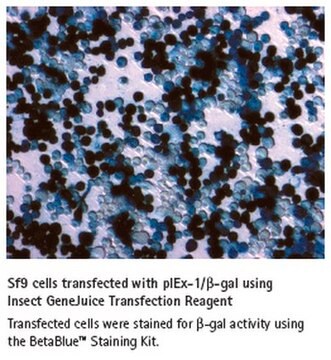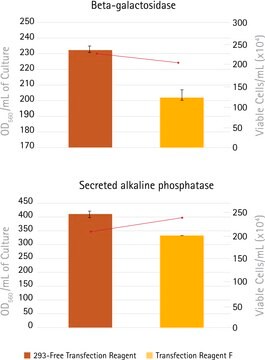T0956
Sigma Universal Transfection Reagent
Polymer reagent for transfecting common mammalian cell lines
About This Item
Produits recommandés
Qualité
for molecular biology
Niveau de qualité
Stérilité
aseptically filled
Forme
liquid (buffered aqueous solution)
Utilisation
sufficient for 110 transfections (3.5 cm dish)
sufficient for 40 transfections (10 cm dish)
sufficient for 65 transfections (6 cm dish)
Concentration
2 mg/mL
Température de stockage
−20°C
Description générale
Application
Excellent for:
BHK-21
CHO
CHOK1
HEK293
HeLa
NIH3T3
Good for:
3LL
6CSFME
ATT20B16-F0
B16-F10
BAEC
Ca Ski
COS-7
CV-1
D 407
HUVEC
L929
MCF-7
MDCK
Neuro2A
SAOS-2
SHEP
SiHa
SKOV3
Caractéristiques et avantages
- Fast, easy protocol
- Suitable for stable and transient transfection
- High efficiency for a wide variety of cell types including primary cells
- Compatible with both serum and serum-free transfection protocols
Composants
Principe
Autres remarques
Produit(s) apparenté(s)
Code de la classe de stockage
12 - Non Combustible Liquids
Classe de danger pour l'eau (WGK)
WGK 1
Point d'éclair (°F)
Not applicable
Point d'éclair (°C)
Not applicable
Certificats d'analyse (COA)
Recherchez un Certificats d'analyse (COA) en saisissant le numéro de lot du produit. Les numéros de lot figurent sur l'étiquette du produit après les mots "Lot" ou "Batch".
Déjà en possession de ce produit ?
Retrouvez la documentation relative aux produits que vous avez récemment achetés dans la Bibliothèque de documents.
Les clients ont également consulté
Notre équipe de scientifiques dispose d'une expérience dans tous les secteurs de la recherche, notamment en sciences de la vie, science des matériaux, synthèse chimique, chromatographie, analyse et dans de nombreux autres domaines..
Contacter notre Service technique